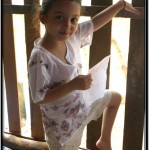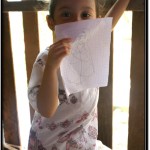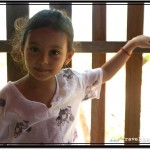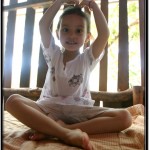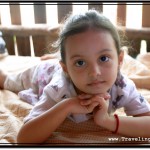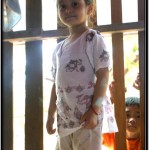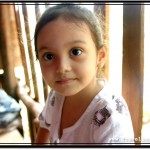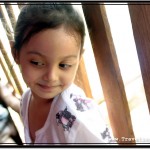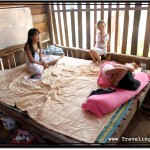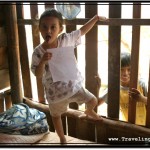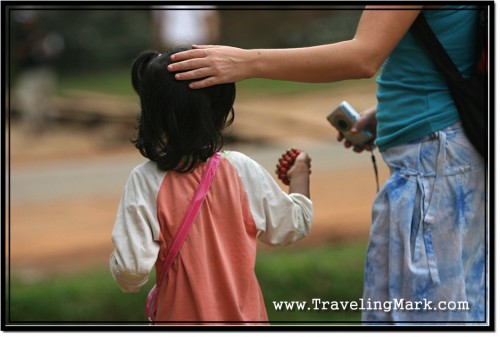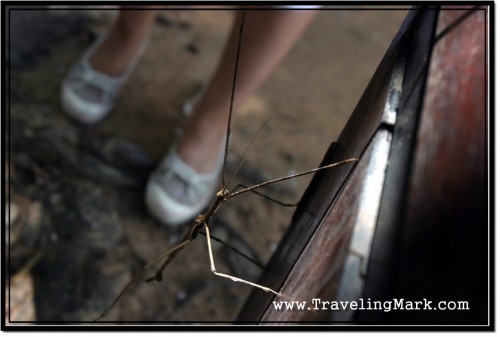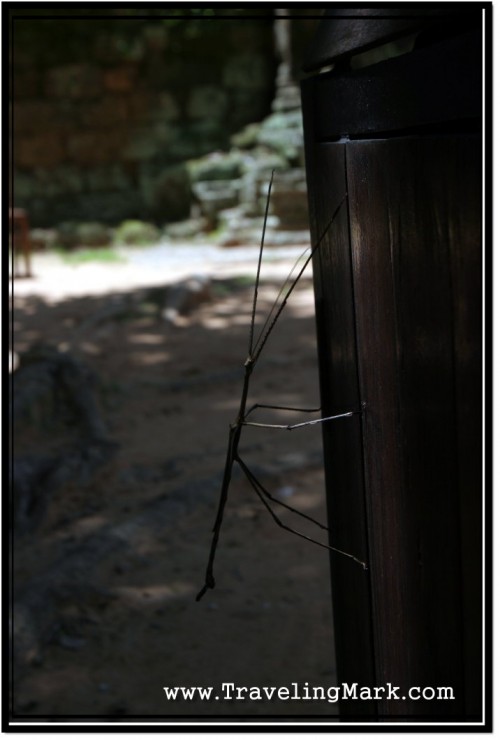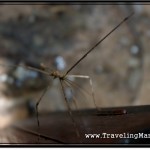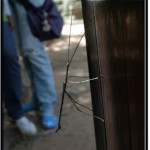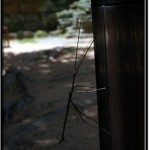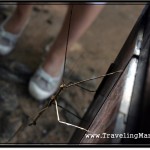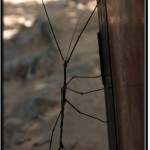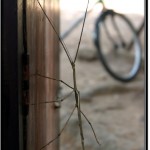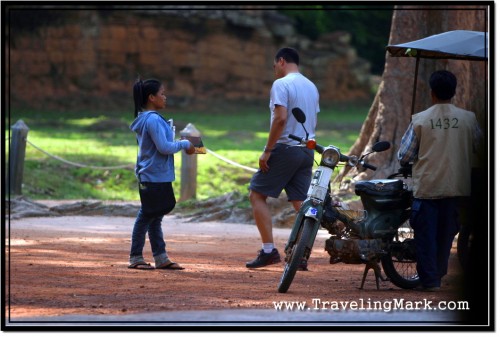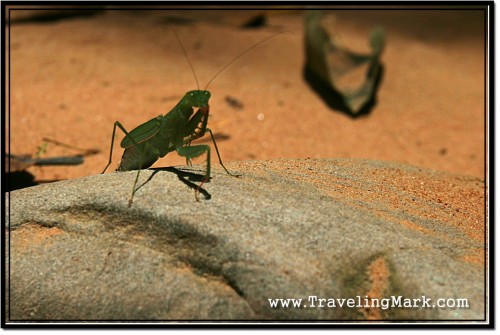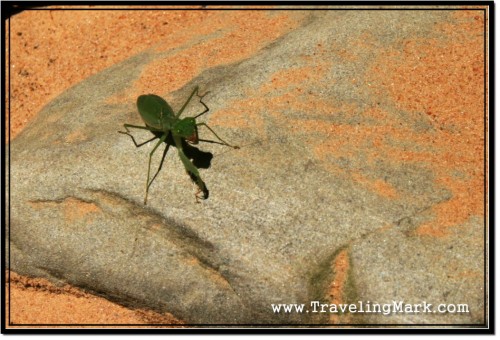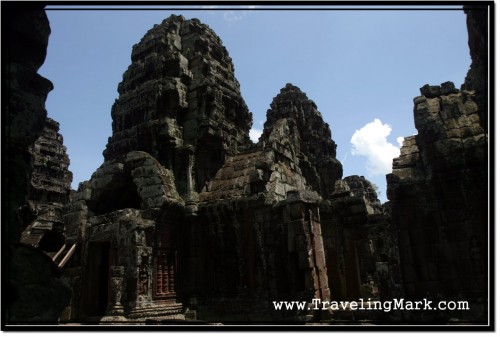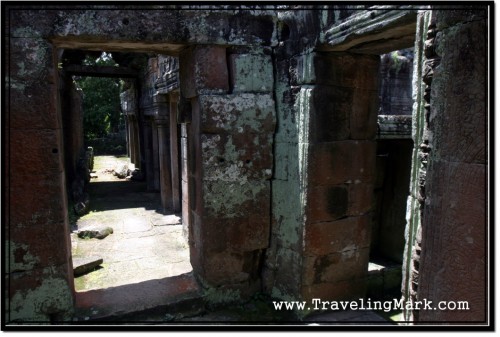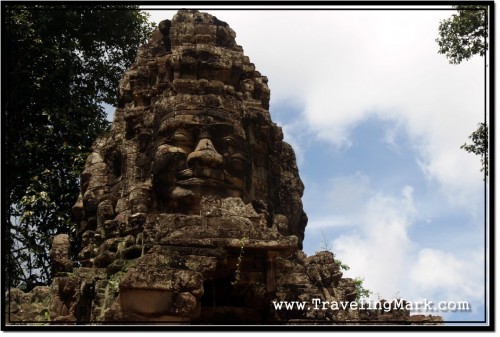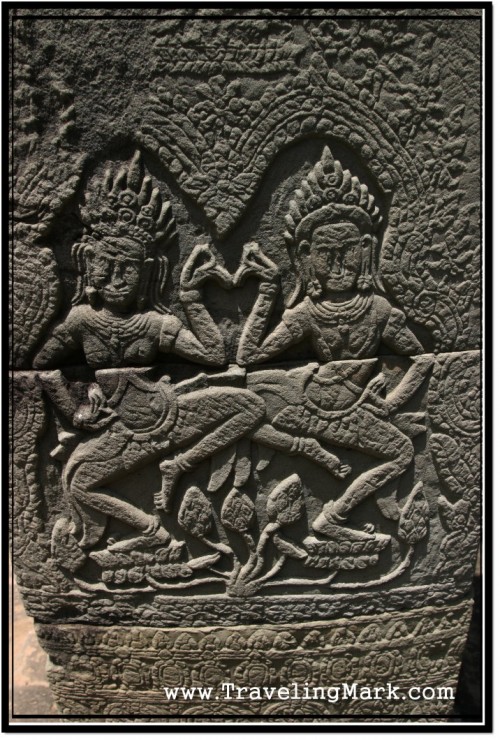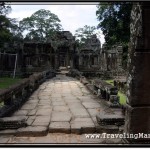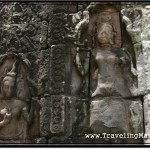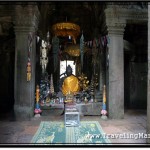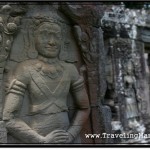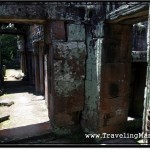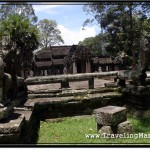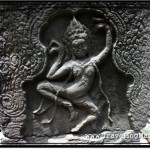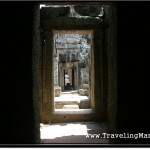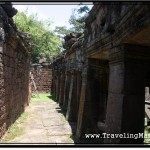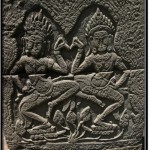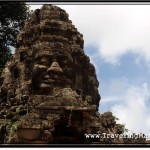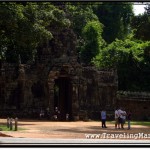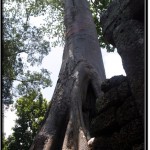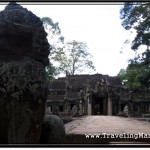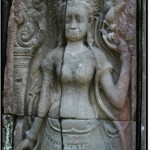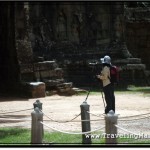After my first meeting with Ha’s daughter, I knew it wasn’t going to be our last. This sort of caught me off guard as all my recent encounters with kids were negative – either trained clowns able to fake-cry on command, going out of their way to get money off of you and telling you to F%$k off if you don’t give it to them, or screaming the entire flight turning an already exhausting experience into a nightmare from hell – so if you even remotely brought up anything to do with kids, I would have told you to keep them as far away from me as possible so nobody gets hurt. But bubbly personality Ha’s daughter was radiating got the best of me.
After I embarked on my third day of Angkor exploring, I took on the Grand Circuit in a counter-clockwise direction with a mandatory stop at my new-found friends’ from the Sras Srang village. The temple of Banteay Kdei was about 12 km away from where I stayed in Siem Reap, and just a corner turn away from the Grand Circuit which made it a perfect, strategic stop to recharge on energy with coconut water and cool off the sweat the ride so far has resulted in. But I also had an extra plan for the stop at Banteai Kdei.
When I first went with Ha to see her daughter, I made a quick stop at a convenience store to buy candy. I thought it would make a kid happy and pre-occupied enough to leave me the hell alone. It did make her happy – beyond happy – but it didn’t keep her off of me, though by that time I didn’t mind. Obviously, buying the kid a simple thing which her mother could not afford to buy meant a world to the little girl. Anticipating my next meeting with her, I thought I was gonna buy something more sustainable and less damaging to her already spoilt teeth. I had to take two things into an account:
- No matter where in Siem Reap I go, I’d get ripped off
- Ha was always by my side, except from times when I was at Angkor
I wanted to make it a surprise so buying anything in Siem Reap would defeat this idea. And since any business in Siem Reap would try to rip me off as much as any tout at Angkor Archaeological Park would, there was no benefit to buying in town over buying at Angkor. On top of it all – my relationship with the Sras Srang villagers was nicely developing so I thought I’ll get the best of both world and buy something for Ha’s daughter from them.
As much as I enjoyed the company of the villagers, they were still Cambodians and I was still a foreigner. For them it’s always an “Us Against Them” game so as I kept spending more and more time with them, but buying nothing except a whole pile of coconuts every day, they continued bugging me and requesting that I fall for their sales pitch and spend more money. Under normal circumstances, I would not give in to the pressure of pestering touts (except that one time when the little girl tout who broke into tears after a would-be customer bought from somebody else), but since I wanted to buy Ha’s daughter something anyway, so why not from my new friends? Whom better to support financially than people with whom I was gonna spend several month with (though at the time I didn’t quite know it yet)? So I did just that. It didn’t ease the pressure one bit, but gave me an extra argument to counter theirs with when they tried to force me into buying some more.
Granted, everything they sell at Angkor is a piece of junk. There are basically two types of items you can buy: bootlegs of all sorts and miserable quality t-shirts. I didn’t have many options so I went for a low quality t-shirt. I’m not very good at buying presents so I had to make it easy on myself. The biggest challenge I was faced with was trying to guess the right size for Ha’s daughter. They had children sized tops with elephants on them in both small and medium. I asked my friends to get some four year old girl touts to come over so I can test the size on them. Since Ha’s daughter was the same age and racial differences are minimal between the Vietnamese and the Cambodians, I thought this was gonna help me choose the right size. I ended up going with medium sized top as small seemed as though it was meant for infants. I also thought buying the top that’s a bit too big would be better in a long run than getting one that’s a bit too small. The four year olds grow big quickly, so if the garment is a tad large right now, it’ll fit just fine later. Whereas if it’s already tight, it’s gonna be completely unusable very soon.
My suspicion was correct – the medium sized top was still a bit too big for her, but that mattered not. Both Ha and her daughter were beaming with delight when I pulled the top out of my camera bag and handed it to the little girl. I haven’t seen this much happiness in a very long time. The girl was so excited she instantly wanted to pose for pictures with her new top on. She loved having her pictures taken and as a photographer, I loved taking them. Four year old, but so photogenic and just shining with glamour. Little did they know at the time that this was naught but the beginning. The main surprise of the day was yet to come.
Gallery of pictures I took of Ha’s daughter wearing the top I bought her from the villagers at Banteay Kdei temple is below:
